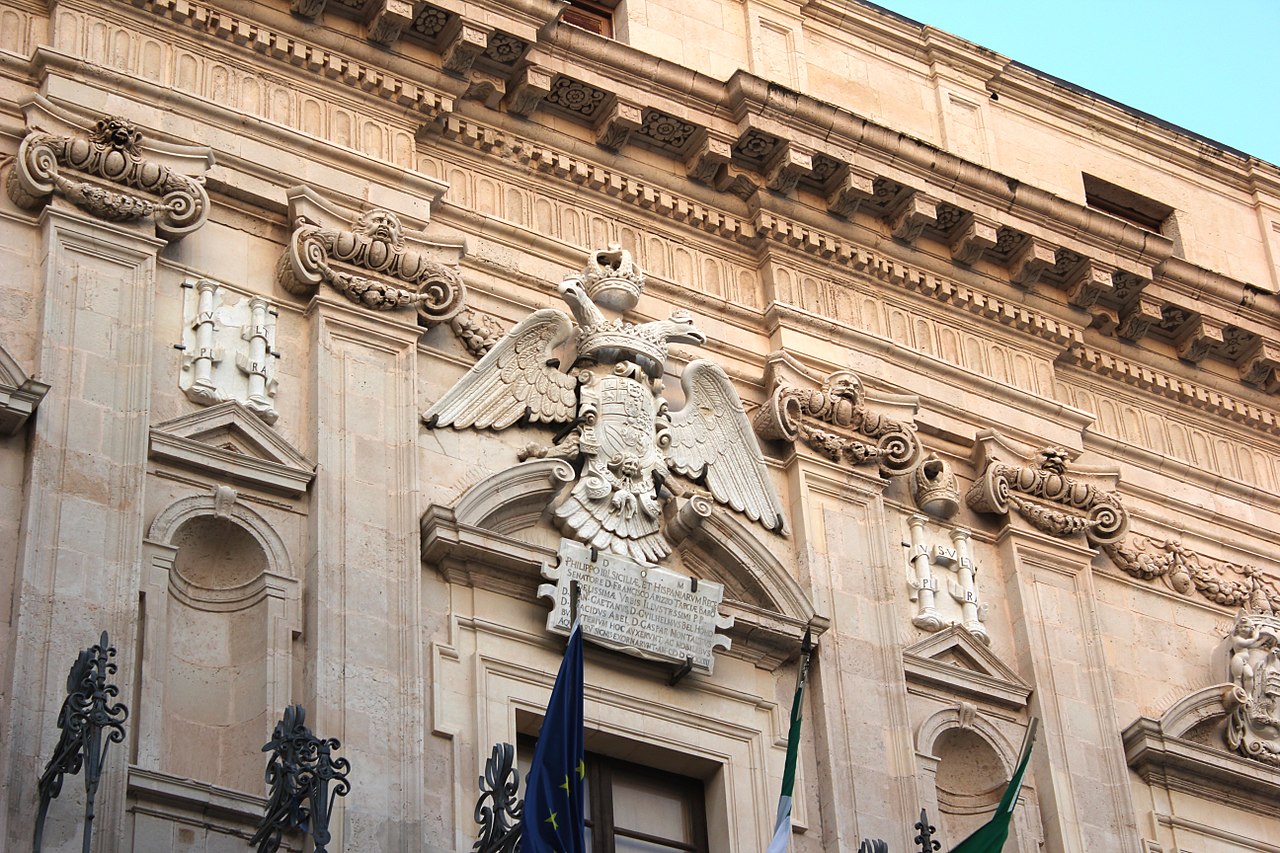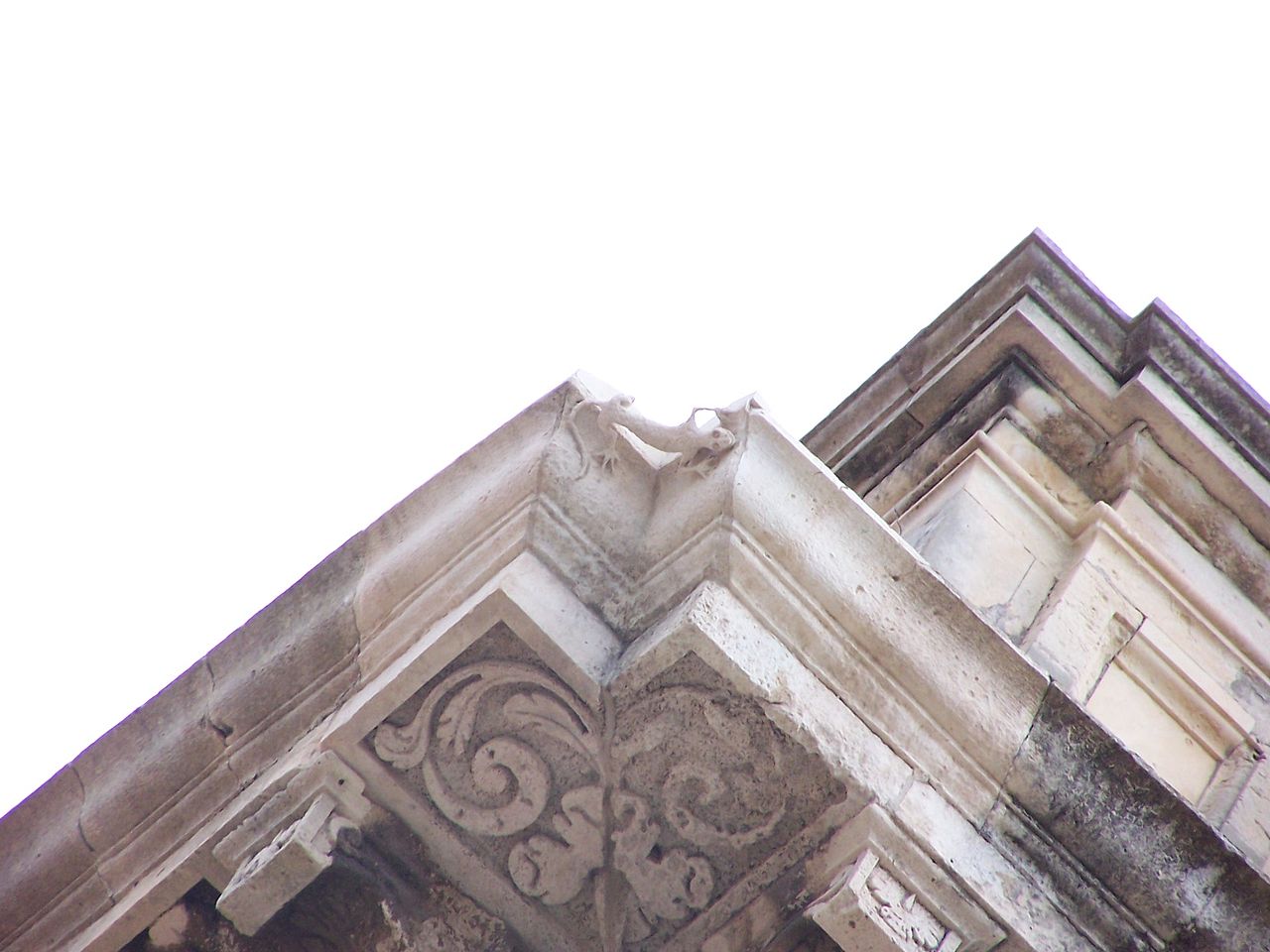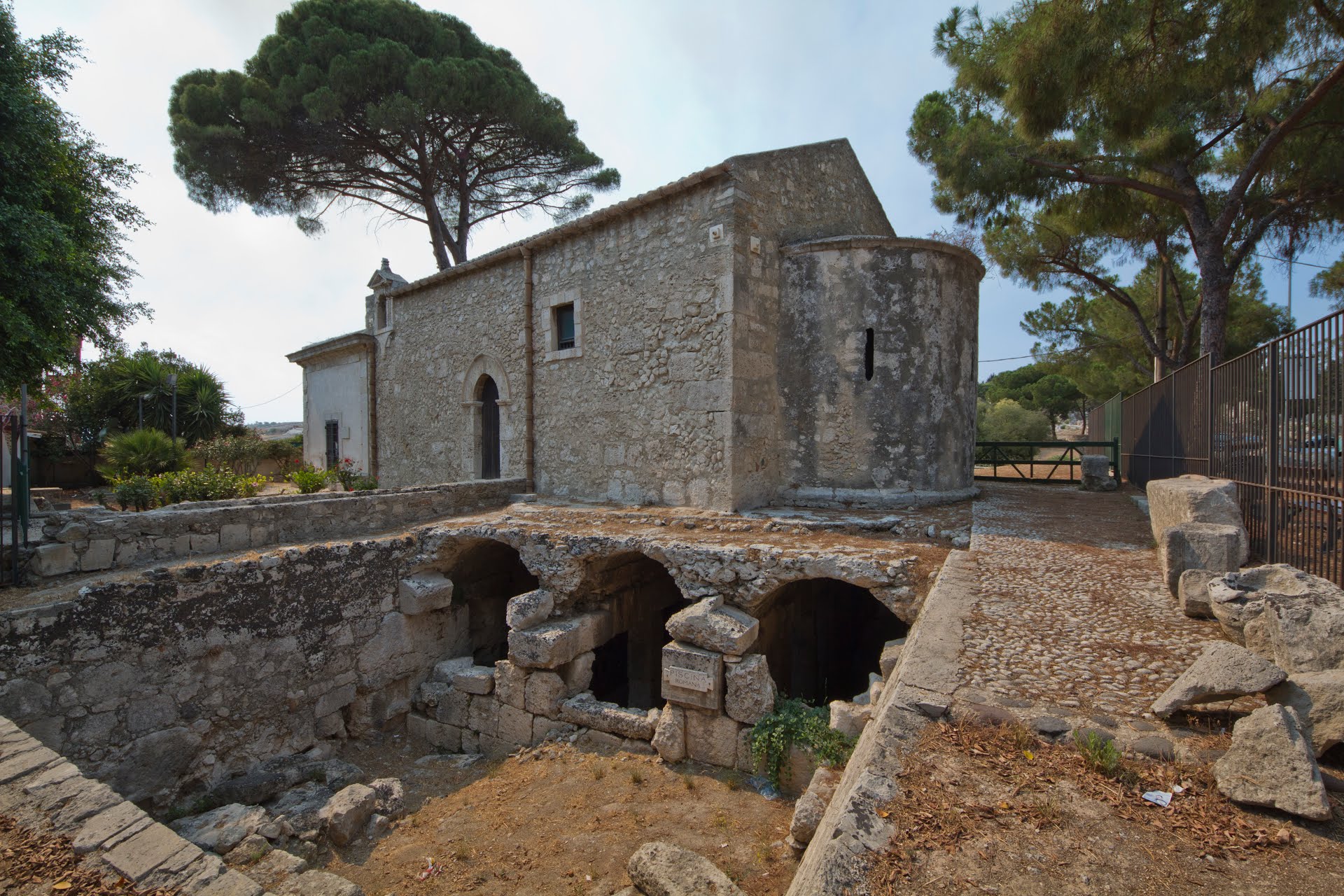Palazzo Vermexio and Artemision
Palazzo Vermexio, which today houses the offices of the mayor and the town hall, was commissioned from the architect Giovanni Vermexio by the Senate of Syracuse in 1629.
The square building is divided in half by a long wrought iron balcony that also stylistically separates the two orders. The lower Renaissance style one is covered by a simple ashlar (stone blocks superimposed on staggered rows) which, on the upper floor, is contrasted with a sumptuous Baroque decoration with tympanums on the balconies, frames, niches, capitals adorned with shells and masks. The sculptural apparatus was entrusted to Gregorio Tedeschi, who created a large royal two-headed imperial eagle above the central balcony, symbol of the Spanish Empire.

Seven statues of the Spanish kings were to be placed in the niches along the elevation, but they were not realized due to the early death of the sculptor.
In the left corner of the frame of the main facade of the palace, the architect Vermexio left his “signature” by sculpting a small gecko (“scuppiuni” in Syracuse dialect) or lizard, an epithet given to the architect perhaps because of his unusual thinness and height.

The most important architectural interventions concerning Palazzo Vermexio were the construction of an attic in 1870 and, around the ’60s, the addition of a new building. For the realization of this extension the ancient church of San Sebastianello was demolished (the remains of which can be seen in the excavation area below) and the seat of the Alagonian Library, founded in 1780 by Bishop Alagona. During these works, the remains of Artemision emerged, a primitive Ionic temple dedicated to the goddess Artemis dating back to the middle of the sixth century BC and probably left unfinished.
The Pavilion of access to the excavations of Artemision was completed in 2011 on the project of the architect Vincenzo Latina. Near the excavation area, towards the inside, there is the Garden of Artemis.
The Garden of Artemis, from January to June 2018, hosts the House of Butterflies, a tropical garden that welcomes butterflies flying around the viewers. Educational and didactic paths are planned with the operators of the house that narrate the life cycle of the butterflies, which starts from the caterpillar to become chrysalis and then butterfly.
In a large glass room inside the atrium of Palazzo Vermexio is also the eighteenth-century Senate Carriage, a classic example of imperial carriage, carriage of great luxury, used during the Baroque era by authorities and dignitaries of that time. The carriage is a typical example of Baroque iconography and each part of it hides a precise symbolism: the pictorial decorations of the interior represent the representations of the four virtues indicated by Plato in the “Republic”, namely Strength, Justice, Prudence and Temperance. It also depicts four women as symbols of the four continents then known, Europe, Asia, America and Africa.
OPENING HOURS AND PRICES
Location: Piazza del Duomo, 4 – Isola di Ortigia – Siracusa
Contacts.: +39 0931 451111



